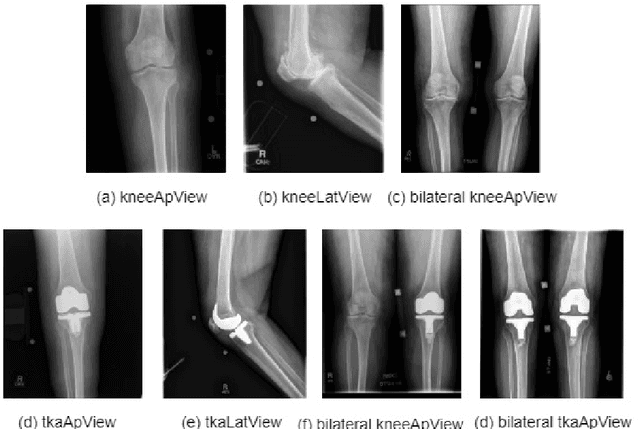Hilal Maradit Kremers
Word Embedding Neural Networks to Advance Knee Osteoarthritis Research
Dec 22, 2022Abstract:Osteoarthritis (OA) is the most prevalent chronic joint disease worldwide, where knee OA takes more than 80% of commonly affected joints. Knee OA is not a curable disease yet, and it affects large columns of patients, making it costly to patients and healthcare systems. Etiology, diagnosis, and treatment of knee OA might be argued by variability in its clinical and physical manifestations. Although knee OA carries a list of well-known terminology aiming to standardize the nomenclature of the diagnosis, prognosis, treatment, and clinical outcomes of the chronic joint disease, in practice there is a wide range of terminology associated with knee OA across different data sources, including but not limited to biomedical literature, clinical notes, healthcare literacy, and health-related social media. Among these data sources, the scientific articles published in the biomedical literature usually make a principled pipeline to study disease. Rapid yet, accurate text mining on large-scale scientific literature may discover novel knowledge and terminology to better understand knee OA and to improve the quality of knee OA diagnosis, prevention, and treatment. The present works aim to utilize artificial neural network strategies to automatically extract vocabularies associated with knee OA diseases. Our finding indicates the feasibility of developing word embedding neural networks for autonomous keyword extraction and abstraction of knee OA.
Give me a knee radiograph, I will tell you where the knee joint area is: a deep convolutional neural network adventure
Feb 11, 2022



Abstract:Knee pain is undoubtedly the most common musculoskeletal symptom that impairs quality of life, confines mobility and functionality across all ages. Knee pain is clinically evaluated by routine radiographs, where the widespread adoption of radiographic images and their availability at low cost, make them the principle component in the assessment of knee pain and knee pathologies, such as arthritis, trauma, and sport injuries. However, interpretation of the knee radiographs is still highly subjective, and overlapping structures within the radiographs and the large volume of images needing to be analyzed on a daily basis, make interpretation challenging for both naive and experienced practitioners. There is thus a need to implement an artificial intelligence strategy to objectively and automatically interpret knee radiographs, facilitating triage of abnormal radiographs in a timely fashion. The current work proposes an accurate and effective pipeline for autonomous detection, localization, and classification of knee joint area in plain radiographs combining the You Only Look Once (YOLO v3) deep convolutional neural network with a large and fully-annotated knee radiographs dataset. The present work is expected to stimulate more interest from the deep learning computer vision community to this pragmatic and clinical application.
 Add to Chrome
Add to Chrome Add to Firefox
Add to Firefox Add to Edge
Add to Edge